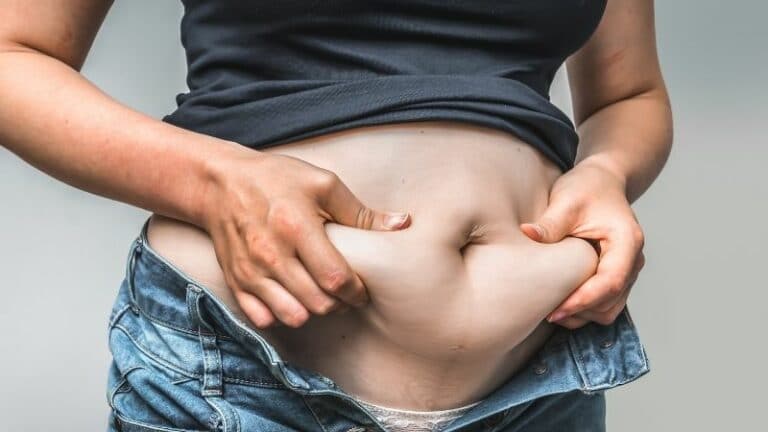A Detailed Introduction to the Keto Diet Plan

The ketogenic diet, or just keto diet, is very low in carbs but rich in fats. The keto diet plan decreases blood sugar and insulin levels, shifting the body’s metabolism toward burning fats for energy which results in the production of ketones. You can lose weight fast on this diet, which is why it’s so popular.
But what does ketosis feel like, and is it good for you? Here’s everything you need to know about the keto diet!
What Is the Keto Diet Exactly?
Even though 2018 was officially the year of the keto diet, this diet was developed in the 1920s as epilepsy therapy. The keto diet, shortened from ketogenic, is a particularly low-carb, high-fat diet similar to other low-carb diets, including the Atkins approach. The keto diet radically reduces carbohydrate intake while substituting the body’s primary energy sources with fats. This decline in carb usage leads the body to a metabolic state called ketosis.
When this happens, your metabolism starts to burn fat for energy. This process is so amazingly efficient; it helps weight loss along with other health benefits. The not-so-obvious advantages of eating keto foods are being hungry less often and having a constant amount of energy. This can help keep you sharp and focused during the day.
Ketogenic diets are characterized by a massive decrease in blood sugar and insulin levels. Sugar is the brain’s main food, but fortunately, the brain can also be fed with ketones produced from fat in the liver. For most people, eating keto diet foods appears to be very safe. However, it is still controversial, and three groups of people require special consideration:
- patients with diabetes who take medications like insulin
- people with high blood pressure on antihypertensive drugs, and
- breastfeeding women
In these cases, it’s good to see a doctor and evaluate your health and adapt medications before starting the keto diet.
Keto Diet Food List
The foods you can eat on this diet, include:
- natural fats like butter and olive oil (0 g of carbs)
- meat (0 g of carbs)
- fish and seafood (0 g of carbs)
- eggs (1 g of carbs)
- cheese and other dairy products (1 g of carbs)
- vegetables that grow above ground (1-5 g of carbs)
(sorted by carb content per 100 grams, in ascending order)
Keto Diet Foods to Avoid
The foods that prevent you from achieving ketosis, include:
- candy (70 g of carbs)
- chocolate bars (60 g of carbs)
- donuts (49 g of carbs)
- bread (49 g of carbs)
- pasta (25 g of carbs)
- rice (28 g of carbs)
- juice (13 g of carbs)
- fruit (6-20 g of carbs)
- vegetables that grow below ground (7-17 g of carbs)
- beer (3.6 g of carbs)
(sorted by carb content per 100 grams, in descending order)
Benefits of a Keto Diet Meal Plan
A keto diet provides several health benefits similar to those of other low-carb diets, but it appears to maximize benefits such as:
- evident weight loss
- reduced body fat percentage
- calmer stomach
- control over the appetite
- control of blood sugar
- possibility of reversing type 2 diabetes
- improved energy and mental performance
- improved health markers (HDL, triglycerides)
- increased physical endurance
Several studies have demonstrated that keto meals can benefit different health conditions, particularly for metabolic, neurological, or insulin-related diseases. Moreover, the ketogenic diet was developed to treat epilepsy.
Some of the diseases that can be influenced positively by the ketogenic diet and keto ingredients include:
- Heart disease—by reducing risk factors such as body fat, HDL cholesterol levels, high blood pressure, and elevated blood glucose.
- Cancer—by slowing the tumor growth.
- Alzheimer’s disease—by reducing the symptoms and delaying the progression.
- Epilepsy—by reducing the number of seizures in epileptic children.
- Parkinson’s disease—by easing the symptoms.
- Polycystic ovary syndrome (PCOS)—by decreasing insulin levels.
- Brain injuries—by aiding recovery after a brain injury or concussion (only animal studies).
- Acne—by lowering insulin levels and due to eating less sugar and processed foods.
How to Incorporate the Keto Diet Plan for Beginners
First, find a good source of information. There are some natural principles that you should follow which show you how to start the keto diet:
- Practically eliminate carbs from your diet.
- Limit protein intake—remember that this is a low-carb diet but not a high protein one.
- Use fat to help you to achieve ketosis.
- Drink lots of water to avoid dehydration.
- Keep up electrolytes, especially salt.
- Eat only when you are hungry.
- Prepare your meals according to the keto food list for beginners.
- Focus on whole foods over processed ones.
- Exercise regularly.
A keto diet can be simple if you learn some basic skills, such as preparing easy keto recipes, adding more fats to your diet, and eating out and staying keto.
How to Get Into Ketosis
The keto diet’s primary goal is to get into ketosis, i.e., get your body to start burning fat. So, how to get into ketosis fast? First, the most important thing is to restrict carbohydrates to 20 grams per day or less. This requirement satisfies the strict low-carb keto diet principles.
However, dietary fiber (technically a carb) should not be limited since they actually help you achieve ketosis. If you aren’t sure how much 20 grams of carbs is, you can use published keto diet recipes and meal plans, all designed with less than 20 grams of carbs. Thus, no counting is required.
The good news is that just restricting carbs to produce some level of deficiency eventually results in ketosis. To be more satisfied with your keto diet results, you have to go through some additional steps, like regulating your protein intake and increasing your fat intake.
Second, your protein intake should be limited to moderate levels because excess protein is converted to glucose in the body, reducing ketosis. Therefore, about 1.5 grams of protein per kg of body weight per day is enough to maintain a proper diet.
Third, eating enough fat is crucial to staying satisfied. If you add intermittent fasting, ketosis will come even faster, but unlike hunger, a keto diet is sustainable and can make you feel great. If you feel hungry all the time, one option is to add more fat (butter, olive oil, etc.) to your meals.
How Long Does It Take for the Body to Go Into Ketosis?
If you remain below your standard carbohydrate intake level, you should achieve a state of ketosis within two or three, though in some cases, up to seven days. The fastest way to get into ketosis is to fast and exercise, which stimulates glycogen consumption in your body. This will deplete your sugar reserves and switch your metabolism towards burning fat.
A keto diet plan for beginners can start by eating more fat to speed up ketosis. Simultaneously, you have to begin cutting out refined carbs. Another option, but a difficult one to execute, is that even though there is keto coffee, drink only water for a few days.
Excreting ketones in the urine is a sure indication you’re in ketosis. However, to see if you’re in it, special ketosis strips that determine if ketones are in the urine can be used. A bit of an expensive and invasive approach is to look for ketones in your blood with a blood ketone meter.
What Are the Symptoms of Being in Ketosis?
Most people who begin a ketogenic diet will feel some unpleasant symptoms. They are known as “keto flu.” These symptoms start a few days after you begin the diet, and they include, but are not limited to:
- light nausea
- headache or migraine
- fatigue
- dizziness
- difficulty focusing (“brain fog”)
- lack of motivation
- irritability
However, these initial ketosis symptoms disappear as your body adjusts to enhanced fat burning. Usually, the adaptation takes about a week. The reasons these flu-like symptoms occur are linked to increased water excretion, typical after previously retaining water from consuming carb-rich foods.
You may also notice increased urination and a loss of extra salt. So, this results in dehydration and a lack of salt. These processes may also be behind most flu symptoms. However, these signs of ketosis can be alleviated or prevented by drinking enough water and eating enough salt. A simple solution to these flu-like symptoms is to drink bouillon or broth at least once a day.
Common Ketosis Diet Side Effects
There are some common side effects, most of which can be considered a typically negative experience. However, getting more water and salt can be helpful for all these negatives of the ketogenic diet.
Side effects include:
- keto breath which smells like nail polish remover (acetone is a ketone)
- metallic taste in the mouth
- leg cramps
- constipation
- heart palpitations
- reduced tolerance to alcohol
- temporary hair loss
- elevated cholesterol levels
- keto rash
- higher fasting blood glucose
- appetite suppression
- gout
- gallstone problems
- “Keto crotch”
Just as there’s evidence that the keto diet plan works and delivers fast, the evidence against it (especially long-term) is starting to pile up as well. For one, its benefits decrease over time, and you lose not only excess fat but lean weight too. Second, it almost certainly raises your risk of developing non-alcoholic fatty liver disease, which can lead to cirrhosis.
Lastly, and most importantly, research has shown that it can increase arterial stiffness, which can, in turn, increase your risk of developing cardiovascular diseases, and it also increases the risk for colon and respiratory cancer. Because of these potential health risks, keto diet rules advise not to live on this diet long-term. So, make sure you follow this rule.
The Keto Diet Plan and Seniors
Aging should in no way prevent someone from going on a keto diet; in fact, it may be even more beneficial for older adults. Besides, too many carbs and too much-processed food shouldn’t be a part of the elderly nutrition. There are many advantages for seniors who decide to try a keto diet menu. The main benefits are linked to supporting mental and physical health at any age. Some of the most significant advantages to maintaining a ketogenic diet plan include:
- Defeating insulin resistance—Many senior citizens are overweight and dealing with insulin-related conditions like diabetes.
- Reducing inflammation—This helps improve the symptoms caused by joint issues like arthritis and other inflammatory conditions.
- Improved bone health—The keto diet can alleviate osteoporosis symptoms in two ways: by lowering the production of toxins, which interfere with absorption, and consuming a wide range of foods rich in micronutrients, rather than being overloaded on a specific macronutrient (calcium).
- Avoiding nutrient deficiencies—Common ketogenic diet foods are rich in vitamin B12, iron, animal proteins, and fat-soluble vitamins like vitamin D. There is one exception here, though. That’s the vegan keto diet, where the deficient nutrients and vitamins should be provided from plant sources.
- Controlling blood sugar—This is necessary not only for diabetes but also for brain-related conditions like Alzheimer’s disease, dementia, and Parkinson’s disease.
Ketogenic recipes could probably repair some of the damage caused by treating our bodies poorly. However, when it comes to senior adults, it could impact their longevity, as well. The ketogenic diet can help seniors improve their health so that they can thrive, get sick less often, and feel less pain in their later years.
Tips for Sustaining a Keto Diet for Beginners
- Skip meals—Thinking of breakfast as the most important meal of the day could be easily changed when on this diet. If you aren’t starved when you wake up, instead of a keto diet breakfast, have a cup of coffee alone. Or maybe prepare a keto shake.
- Prepare your own meals—Delicious meals for lunch or dinner can be easily prepared by including meat or fish with a salad, for example. A vegetarian keto diet is also an option—e.g., vegetables cooked with melted butter, cheese, or a rich sauce.
- Substitute bread—Not surprisingly, bread is one of the most common foods that people miss on this diet plan. But fear not, some tasty recipes for keto bread are low enough in carbohydrates to be suitable for this diet. Another substitute for bread may be your favorite food—pizza. Yes, you’ve read it right; there’s keto pizza, too.
- Dine out—When you’re dining out, avoid foods like bread or pasta and request foods with extra fat (i.e., butter or olive oil) if you need it.
- Load up on keto vegetables—These include celery, spinach, asparagus, avocado, zucchini, cauliflower, cucumber, cabbage, broccoli, brussels sprouts, kale. As you may notice, most of them are green! And they grow above ground.
- Eat smart—Choose real food, not specifically “low-carb” products. Your goal should be to stay healthy, not just lose weight.
- Calculate your carbs—You can also use a keto calculator to estimate how many carbs you eat in a day, roughly.
- Can’t give up the desserts?—Don’t worry, there are also keto desserts. They’re low in carbs but still delicious. So, you can enjoy the delicious keto cookies without feeling guilty.
- Treat yourself—But go for healthy, moderate-carb choices like berries, nuts and seeds, and dark chocolate.
- Avoid snacking when you aren’t hungry–However, eating keto snacks will minimize the damage, and they’re fine for when you get hungry.
- Get enough sleep–—Get at least seven hours per night and keep your stress under control. It’s been shown that sleep deprivation and stress hormones increase blood sugar levels, slowing the ketogenic diet and weight loss. And they might make it harder to resist temptation and stick to your diet.
How Do Ketogenic Diet Results Help With COVID-19?
At times of this brutal pandemic, implementing lifestyle preventive measures is mandatory. And it is rational to apply primary prevention principles to try and contain the pandemic by avoiding risk factors. That said, there is a lot of evidence that hypertension, obesity, and cardiovascular disease considerably add to adverse COVID-19 outcomes.
But, there is some good news after all. The ketogenic diet recipes can be helpful in this area, as it’s known that the keto diet effectively reduces fat mass, has anti-inflammatory and immunomodulatory effects, and improves cardiovascular health. In addition, an adequately customized keto diet should be set up to produce a lasting lifestyle change in obese patients, lowering some of the risk factors for severe COVID-19 by multiple mechanisms.
Conclusion
After having the keto diet explained, you now know that people who are overweight and obese, have diabetes, or are looking to improve their metabolic health may experience significant benefits from adhering to the keto diet. At the same time, it may be less beneficial for professional athletes or bodybuilders wishing to add vast amounts of muscle or weight. Nevertheless, as with any diet, it will only work for people who are consistent and stick to the keto menu for an extended period.
FAQs
What are ketones and how do they work?
The “keto” in a ketogenic diet comes from the names of small fuel molecules—“ketones.” The ketones are transformed from fat in the liver when you eat very few carbs and moderate amounts of proteins. They’re an alternative body fuel source, used when blood sugar is in short supply.
Ketosis is a normal metabolic process arising when there aren’t enough carbohydrates in your food. In this case, cells burn fat for energy and make ketones. It can also occur after long training or during pregnancy. For people with poorly controlled diabetes, ketosis is a sign of not using enough insulin. Ketosis can become dangerous when ketones rise, which can lead to dehydration and change the electrolyte balance in the blood.
Are ketones bad?
No, they aren’t. Ketones are only bad when they’re contributing to the life-threatening condition called ketoacidosis. Ketoacidosis is a dangerous medical state isolated from the “nutritional ketosis” of a keto diet. Nutritional ketosis is an entirely normal process. However, it’s essential to differentiate between ketosis vs. ketoacidosis because they are not the same condition. You cannot get into ketoacidosis just from dieting.
Why is ketosis bad for you?
Ketosis isn’t usually bad for you. While it can be beneficial for a number of people, certain groups of patients—such as those with type 1 diabetes, cystic fibrosis-related diabetes, pancreatectomy, type 2 diabetes with minimal pancreatic function—need to be more careful. In these groups, very high ketone levels could lead to diabetic ketoacidosis, a dangerous situation caused by a lack of sufficient insulin.
Why is ketosis bad for you?
Ketosis isn’t usually bad for you. While it can be beneficial for many people, certain groups of patients—such as those with:
- type 1 diabetes
- cystic fibrosis-related diabetes
- pancreatectomy
- type 2 diabetes with minimal pancreatic function
need to be more careful with their keto meal plan. In these groups, very high ketone levels could lead to diabetic ketoacidosis, a dangerous situation caused by insufficient insulin.
How do you know when your body is in ketosis?
There are a few indications that you might be in ketosis:
- reduced appetite and improved energy
- increased thirstiness and urination
- ketosis breath and dry mouth or a metallic taste in the mouth
If you experience some of these signs and symptoms, you should measure your level of ketosis by using urine strips, breath analyzers, or blood meters.
Is it safe to do the keto diet?
A keto diet is usually very safe. However, three conditions are considered bad for the keto diet:
- When you have diabetes and take medications like insulin.
- When you’re on medications for high blood pressure.
- When you are breastfeeding.
If you want to go on a keto diet, some modifications to the diet can be made to do it safely.
How to know if you are in ketosis?
Generally speaking, you should enter ketosis in 2–4 days. Be that as it may, some people need a week or even longer, depending on exercise levels, age, metabolism, and current protein, carb, and fat intake. Therefore, the best way to know if you’ve entered ketosis is by measuring your ketone levels through breath, urine, or blood ketone measuring tools.
Is it good for your body to be in ketosis?
Ketosis is excellent for your body. Not only does it help you burn fat, but it can make you feel less hungry and help you keep muscle.
How many carbs should I eat for ketosis?
Different keto diets allow different amounts of carbs. For example, the standard ketogenic diet allows 10% of carbs, the cyclical ketogenic diet—five low carb days and two high carb days, the targeted ketogenic diet—more carbs around high-intensity workouts, and the high protein ketogenic diet allows 5% of carbs. However, experts who recommend ketogenic diets mostly recommend the standard keto diet plan.





